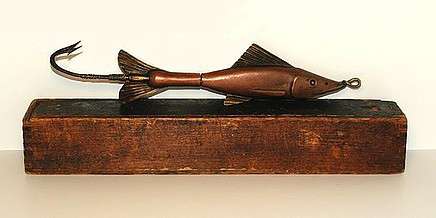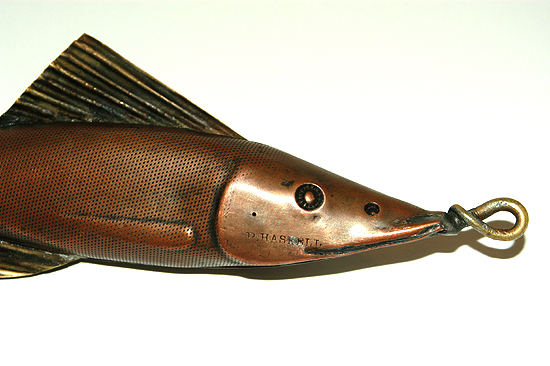
Before I begin, it’s only fair to warn you that this is not about the lure George Perry used to catch his world record largemouth. Nor is it about what Manabu Kurita used to eclipse that record.
It’s about the most valuable lure in the world — one that brought more than $100,000 at auction!
One hundred and one thousand, two hundred dollars … to be exact. That’s nearly twice what a tricked out bass boat would cost. But for a certain lure collector with plenty of money, it seemed well worth the price at the time.
So what was the name of this lure and why is it so special?
It’s called the “Haskell Minnow,” and it set the all-time record for a fishing lure sold through public auction. The reason it brought so much money is that it’s considered an ultra-rare, one-of-a-kind example.
Measuring 10 inches in length, the “Giant Haskell” is nearly double the size of all other known Haskell Minnows — which are also quite rare.
The sale was conducted by Lang’s Auctions of New York. Sort of the Sotheby’s of fishing collectibles, they hold semi-annual auctions that target tackle collectors worldwide. And until the gavel fell on the Giant Haskell, the next closest lure sold for a reported $42,560 (also through Lang’s). That’s a huge difference, even in the world of high-end collectibles.
Humble Beginnings
Back in the mid-19th century, a highly skilled gunsmith by the name of Riley Haskell decided to dabble in fishing lures. Because metal was his medium, he formed heavy trolling and casting lures from thick sheets of copper and brass. His creations were intended to fool bass, pike and musky … and like his guns, each was a work of art.
Each Haskell Minnow exhibits exquisite detail, and all are fish-shaped with hollow bodies featuring finely sculpted gills and fins. Finishes range from raw to plated, or having a light silver wash. Of the few known surviving examples, most display a finely textured scale pattern.
The hook configuration, too, is unique. Using tandem angular hooks, a pair extends from the revolving tail section to curve upward.

Although numerous variations and sizes of the Haskell Minnow have been found, none come close in value or desirability to the giant 10-inch model that surfaced several years ago.
Haskell-Mania
To collectors, knowing the provenance of an item is as important as the piece itself. Unfortunately, the story of the Giant Haskell is vague at best.
It begins with an anonymous “picker” from North Carolina, who apparently acquired the lure from an elderly gentleman, who had it hidden away for decades. When asked where he acquired it, the elderly gentleman couldn’t recall specifically … only that it was a long time ago.
Negotiations took years before a successful deal was made. And it wasn’t until the elderly gentleman died that the picker finally decided to offer it for resale.
Knowing the giant minnow was highly unusual, the picker sought the advice of tackle collectors, in the hope of learning its true value … and that’s when the firestorm ignited.
You see, not only do lure collectors covet Riley Haskell’s work — gun collectors, too, prize his creations. And that’s what made the gavel price soar at Lang’s auction.
Well in advance of the sale, Lang’s began a worldwide campaign to promote the offering. Touting it as “one of the rarest lures ever found,” they spread the word through an extensive media campaign, both print and electronic, and the collecting community followed closely with great anticipation.

Finally, on Nov. 18, 2003, after a heated bidding war, a welding contractor by the name of Tracey Shirey claimed the prize. Shirey, already an owner of numerous Haskell Minnows, wanted to make the Giant Haskell the centerpiece of his collection.
Oddly, however, just a few months later, Shirey sold the rare minnow to another tackle collector by the name of Kerry Chattam. And according to sources, the deal included all of Shirey’s Haskell Minnows. Unlike Shirey, however, Chattam saw the Giant Haskell as more of an investment, and he treats it as such. The rare bait now lies hidden within the steel walls of Chattam’s local bank in northern Alabama.
Almost as quickly as it was discovered, the 150-year-old angling artifact has, once again, essentially disappeared. And though it surfaced for only a short time, the shockwave it created still ripples through the collecting community.
Follow Bernie Schultz on Facebook or through his website.

